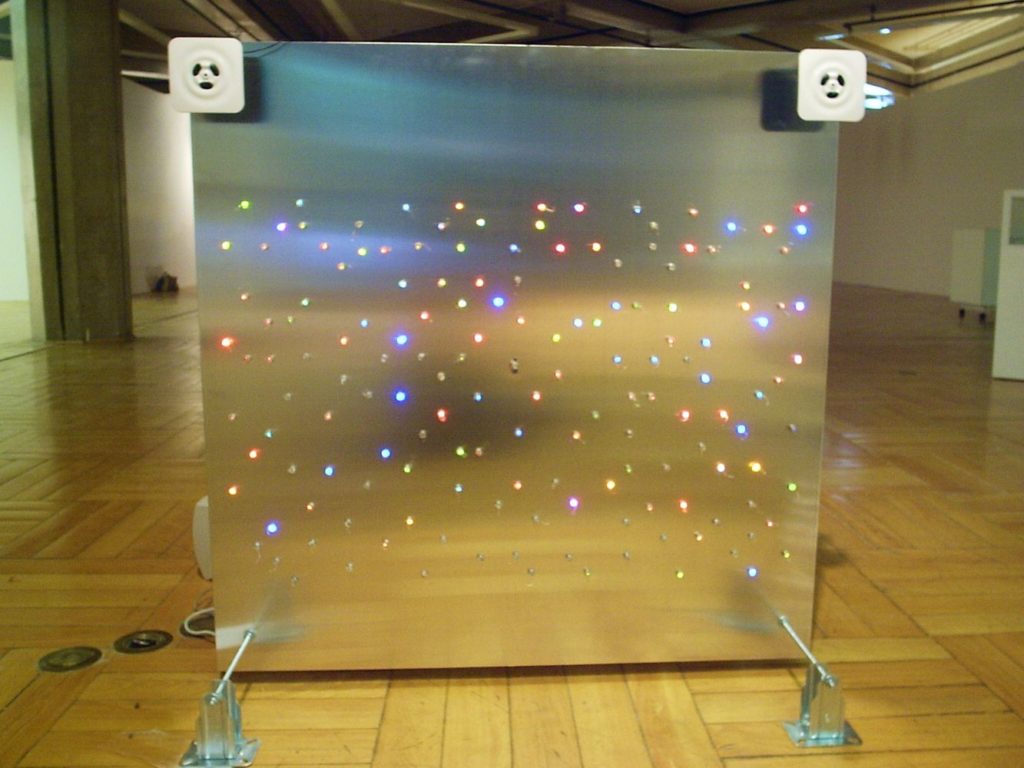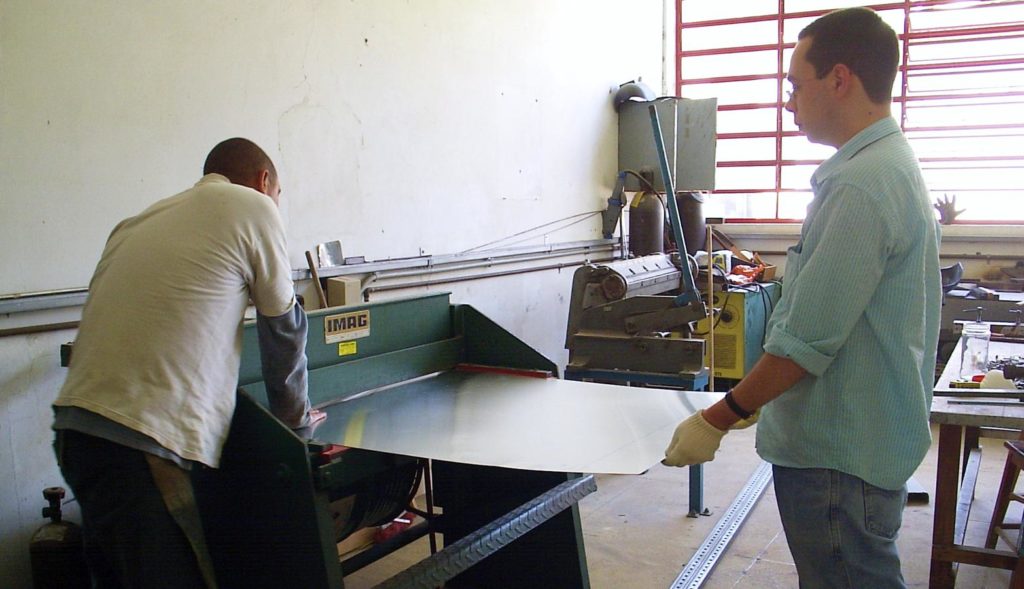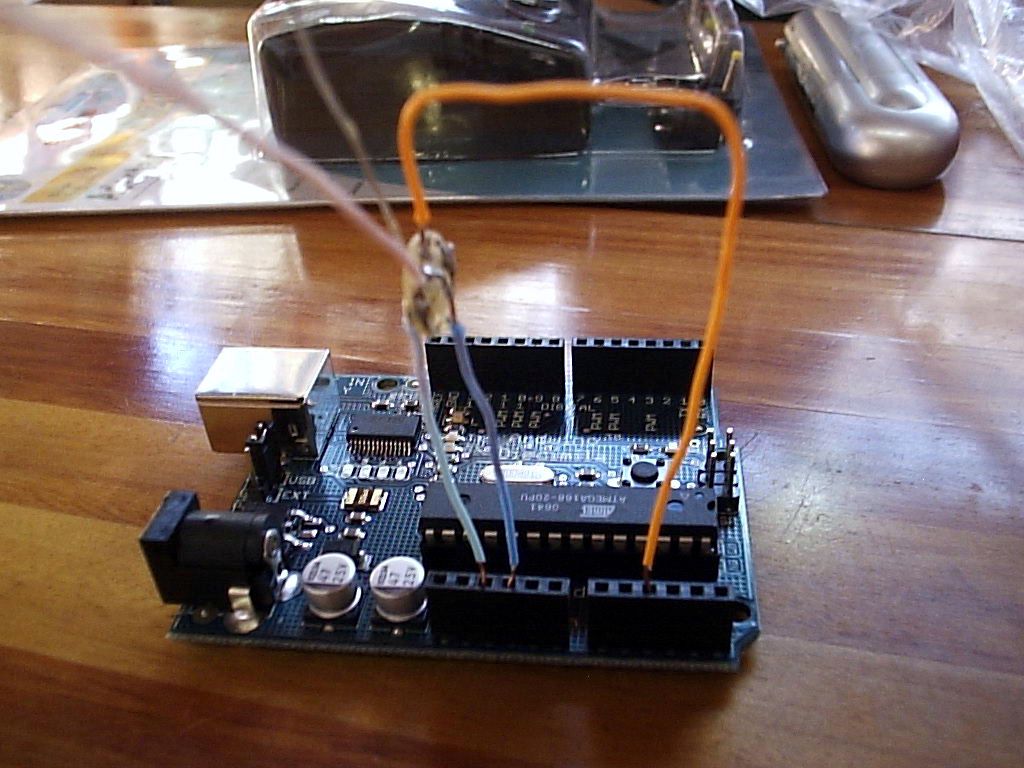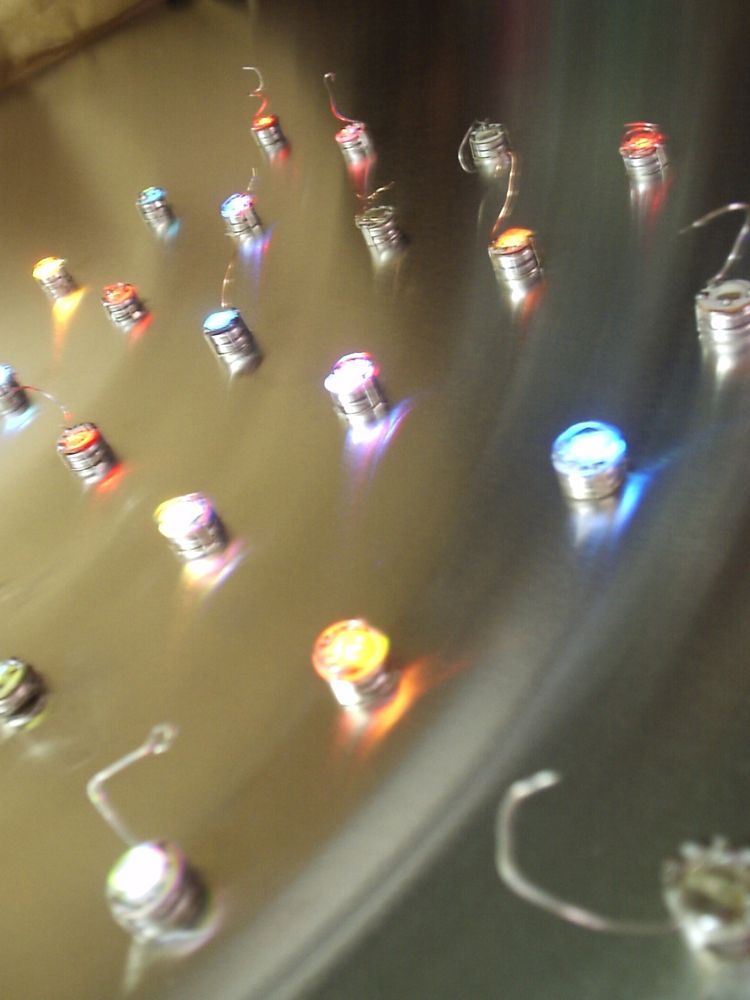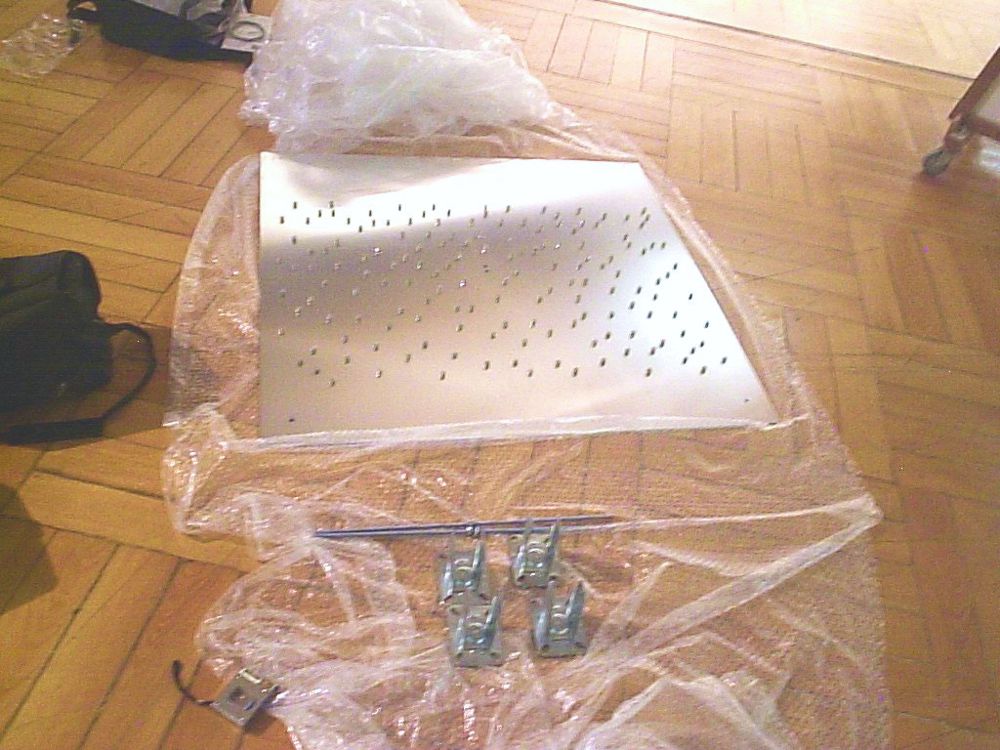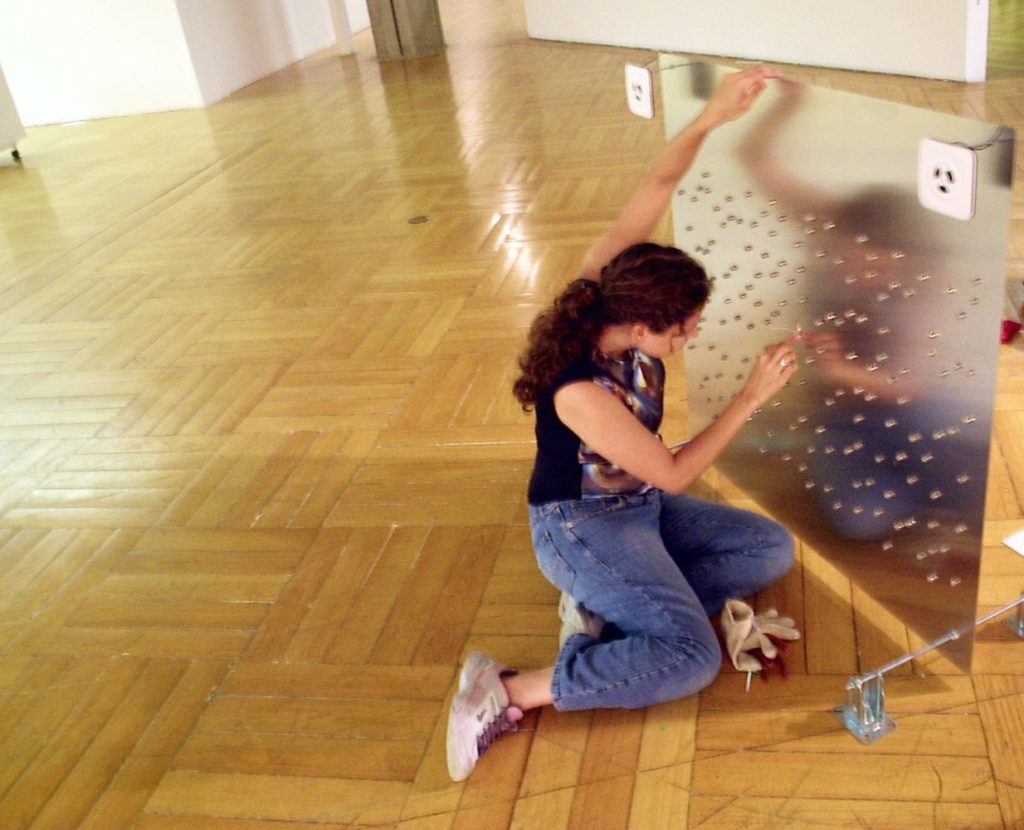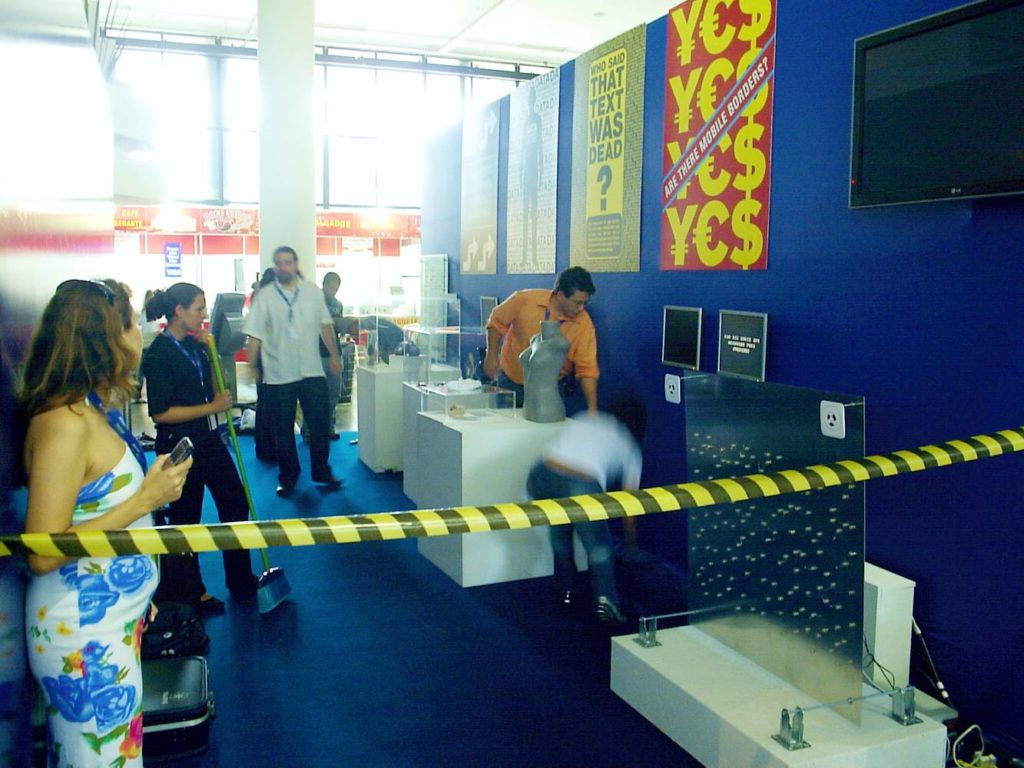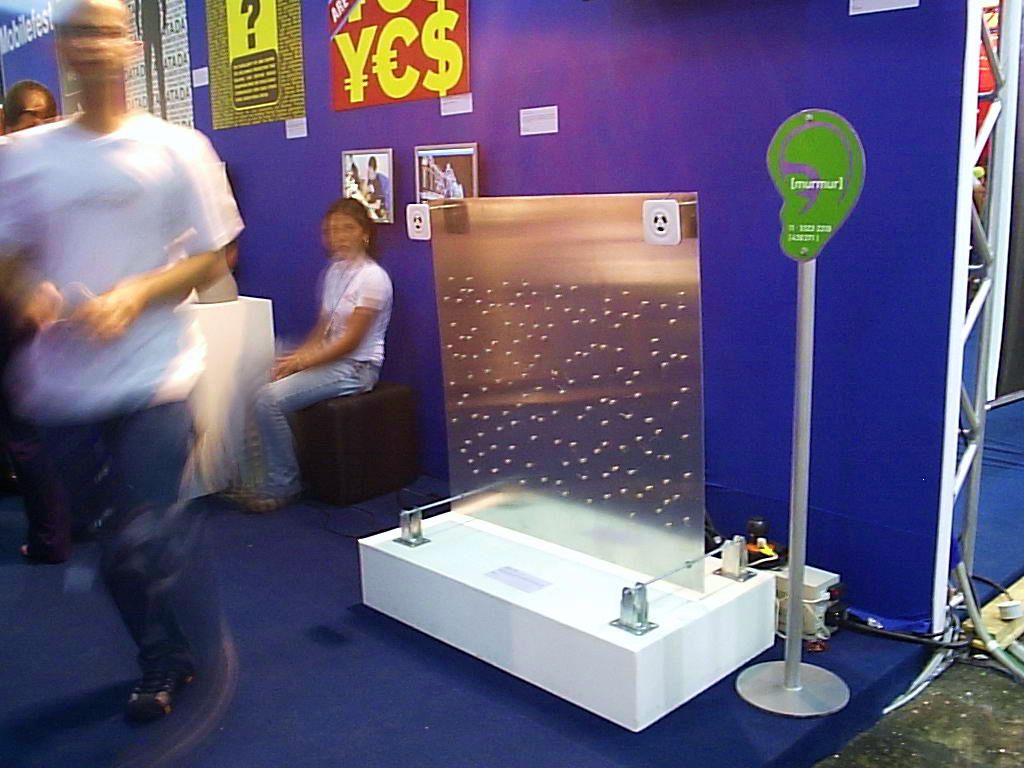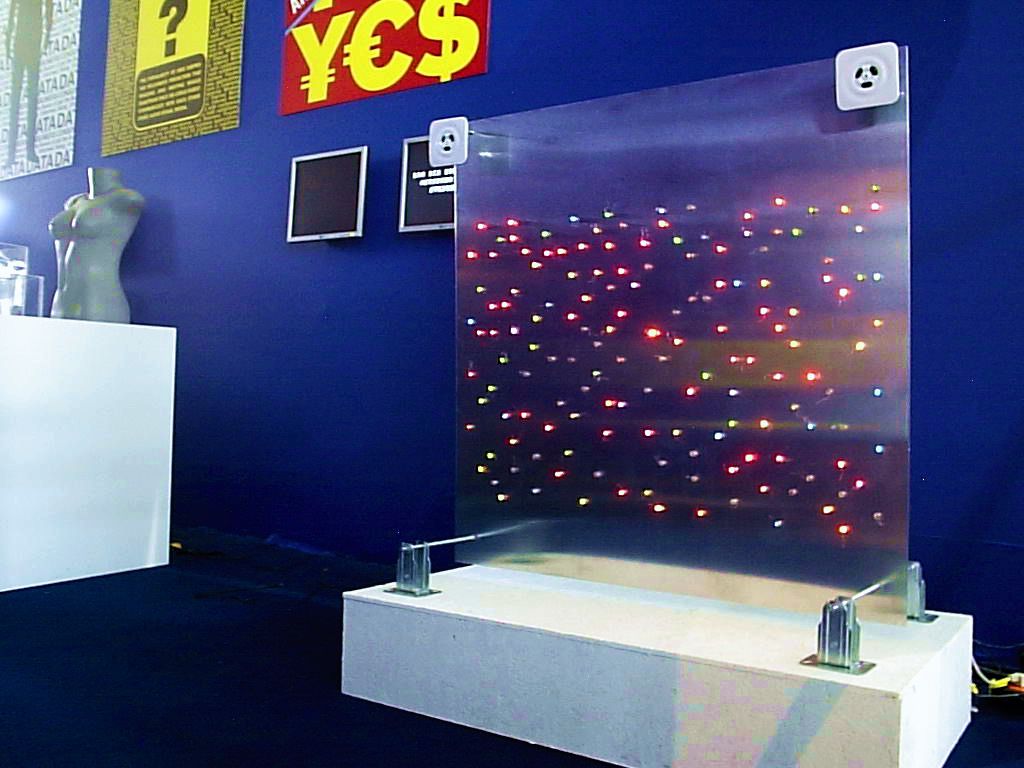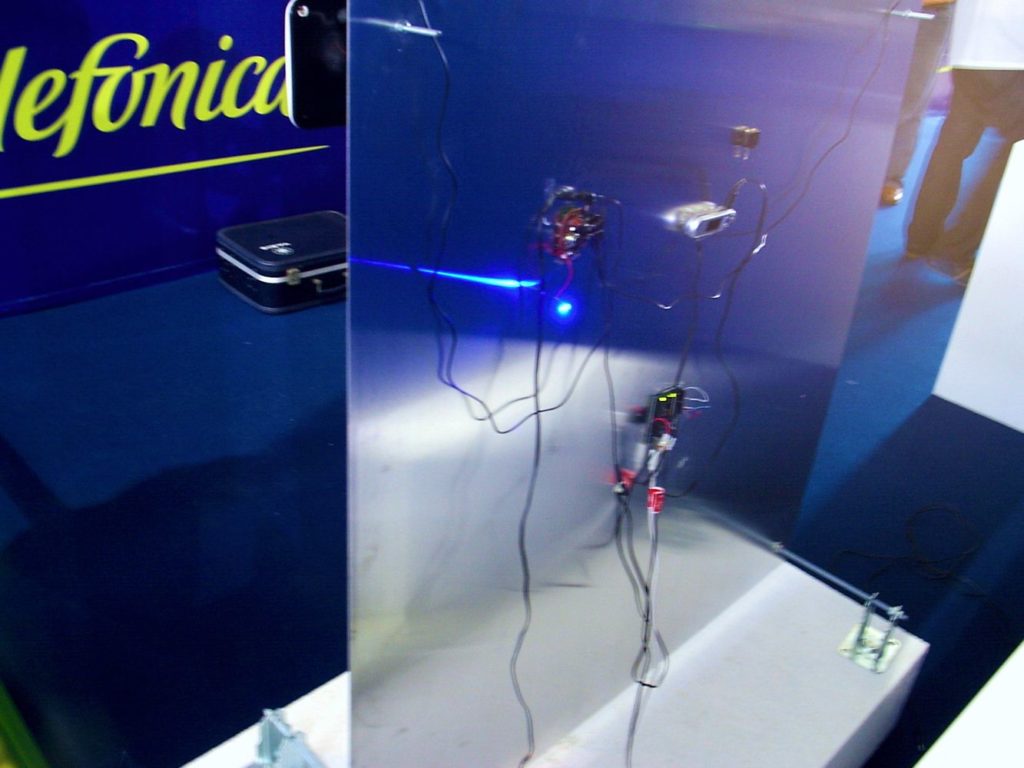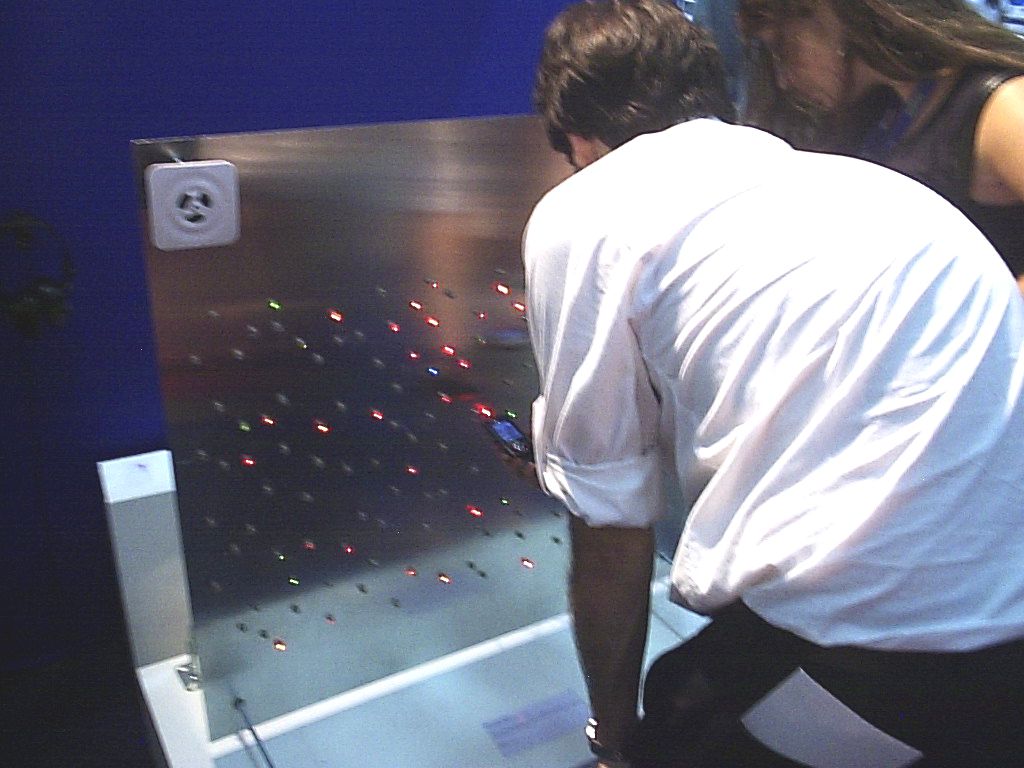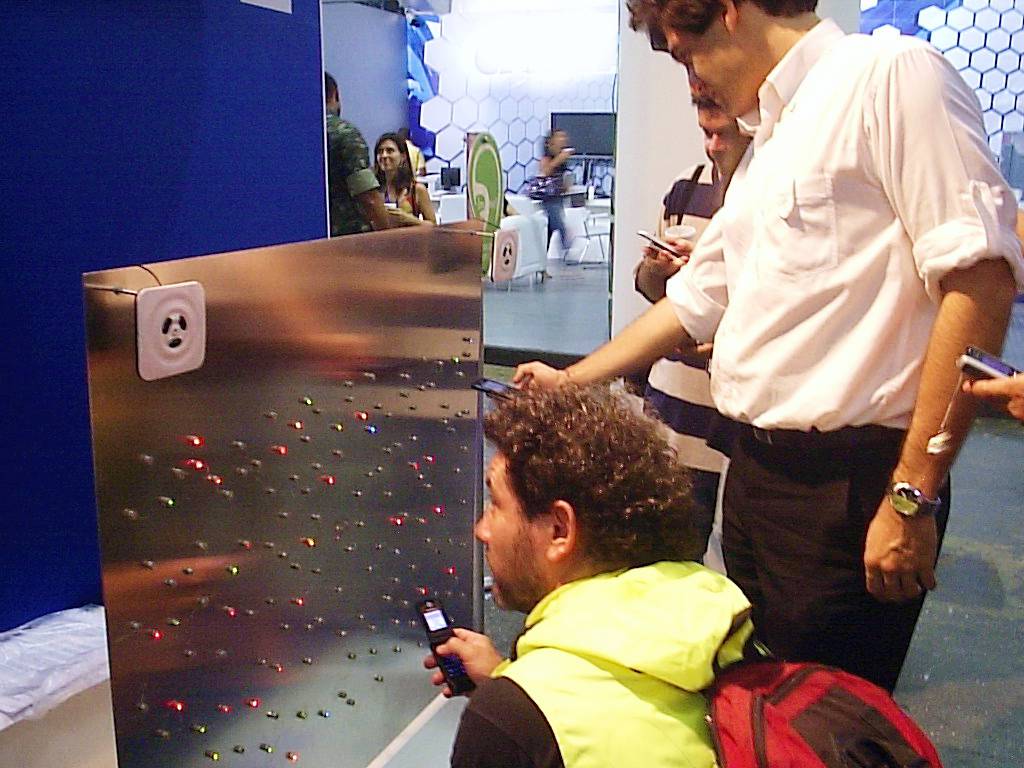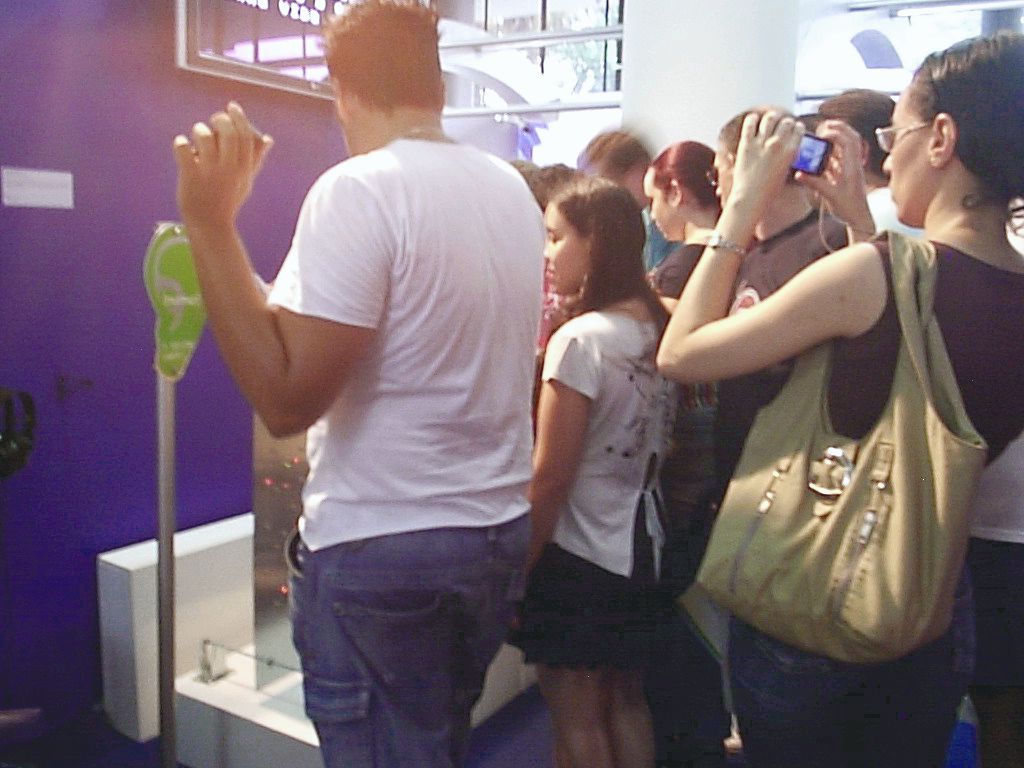Soraya Braz and Fabio FON · Installation · 2007
When he realizes the use of cell phones nearby, Grampo reacts by carrying out uncomfortable conversations, discussing environmental issues (radiation from devices) and social issues (intrusive practices in conversations) in the use of technology.
Grampo (Wire tap in English) was a artwork produced by Soraya Braz and Fabio FON that proposes to bring out the intrusive character that cellular telephony encapsulated in its use, especially in the context of the gigantic dissemination that technology acquired in the 2000s. Grampo was an object that had light sensors that captured the radiation of the environment in which it was and with a system capable of emitting sounds when there was a cell phone (or other emissions of electromagnetic radiation) in use nearby. First, as well as the Roaming artwork, Grampo had small radio frequency sensors, which were commonly used inside cell phone pendants, sold in jewelry and haberdashery stores. These sensors become luminous when capturing the use of cell phones. When they are stimulated by certain electromagnetic transmissions (use of cell phones in proximity, for example) they light up, making visible the presence of radio frequency emissions.
In addition to the available sensors, there was also a system managed by one of these sensors that detected the use of cell phones and triggered a bank of disturbing conversations by cell phone users, captured by artists in public places in the city of São Paulo (an unauthorized practice by their speakers, which justifies the title of the work). In practice, when a visitor used his cell phone near work, small portions of these conversations were automatically reproduced, as intrusive communication noises. At the same time, the entire artwork is illuminated with colored light strings.
The intention of the artwork was to deal with different spheres of intrusion of this technology: if on the one hand we have the environmental issue, when electromagnetic radiation silently invades spaces and passes through our bodies, on the other, there was also a more social character, in an attempt to return users an intrusion that confuses public and private spaces. This concern would also be present in a later artwork called Captas, in which the radiation sensors advance to the urban space.
Grampo was initially presented at the exhibition 27 Formas at Paço das Artes, in São Paulo, between 11/12/2007 and 06/01/2008. The exhibition 27 Formats was organized by Profa. Dr. Silvia Laurentiz, in conjunction with the Plastic Arts Department of the School of Communications and Arts at USP. In 2008, it was presented at the Mobilefest Exhibition Exhibition – Festival of Mobile Art and Creativity – inside Campus Party Brasil, held at the Bienal Pavilion, Ibirapuera Park, São Paulo, between February 11th and 17th. The event was attended by 3,000 subscribers and more than 50,000 visitors, in addition to extensive press coverage.
This work had the collaboration of the artists duo Sergio Bonilha and Luciana Ohira in the programming of the hardware – an Arduino board – that managed the sound system.
Automatic translation of the original page in Portuguese.
SEE ALSO

ROAMING

